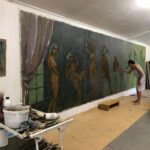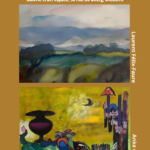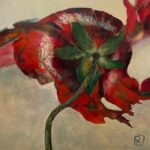ANNA PUIG ROSADO – “Photography is the means of expression and creativity by which I understand and perceive the world in a better way.”
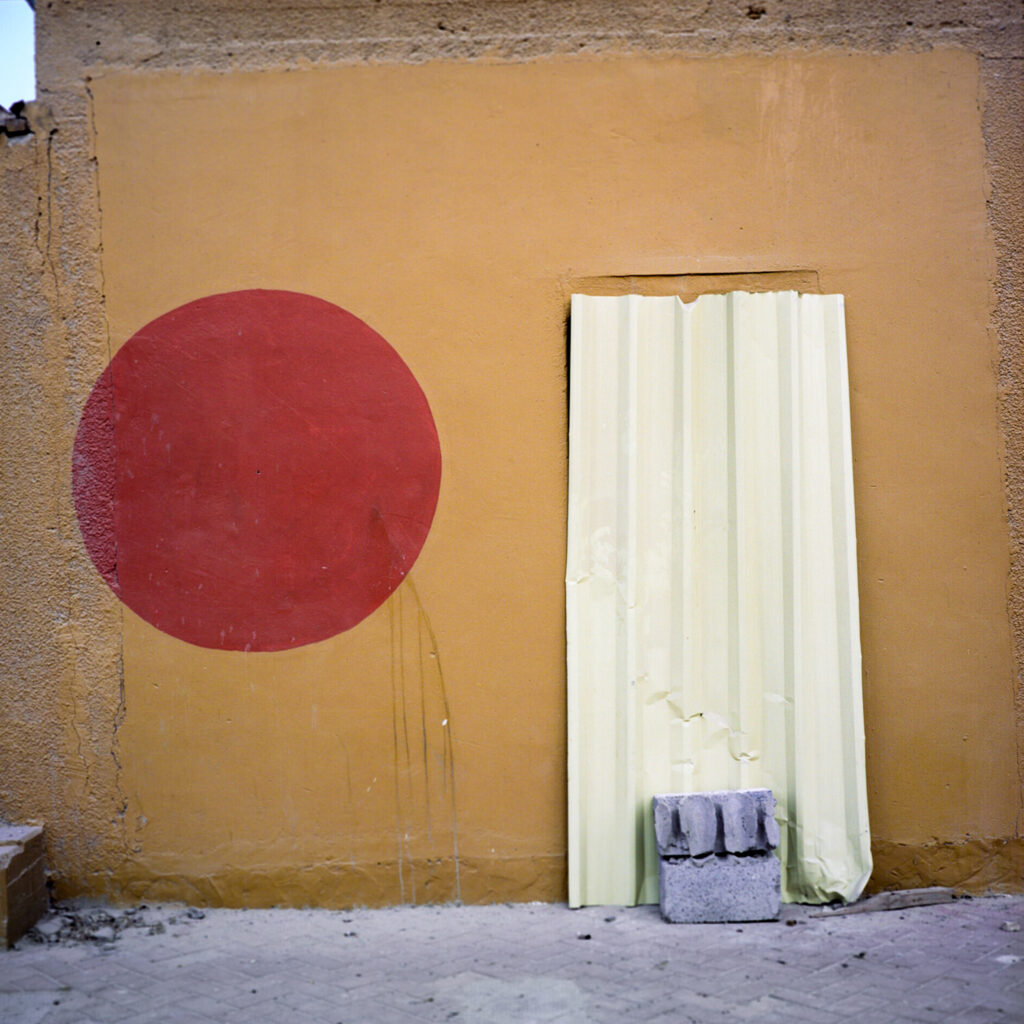
When I set out to write my blog “Provence Reflections” my purpose was to meet and discover talents in the field of visual arts living and working in the Drôme. The impression I had then was that there was a large number of artists but that many of them worked in relative anonymity. To date in the course of two years I have carried out 20 interviews (including one with my wife Anke de Vries and one blog post about myself) and all these people lived at just a stone’s throw from my home. This goes to say that if the circle were to be extended one can only guess at how many creative minds (and hands) there are throughout our whole Department. Talking to all these artists about their art and sharing what they have told me with the readers of this blog has proven to be an enriching artistic and human experience. As I write these lines, we are going through difficult times during which the corona virus epidemic has forced us to remain confined in our homes for weeks on end. I cannot foresee how the situation will evolve and whether it will affect the possibility of distributing the blog at regular intervals. For now, I can only hope that my readers and my many artist friends are in good health and that they do not find all the precautionary measures to which we are constrained too hard to follow.
Photo above: Dubaï “Mise à mort du perroquet”
ANNA PUIG ROSADO (www.annapuigrosado.net)
My interview this month is with an exceptional photographer. As indicated by her name Anna Puig Rosado is half Spanish. She lives further down south, a twenty-minute drive from my place, in the village of La Roche-Saint-Secret with her husband who is a writer and also a photographer, and their two children. The corona virus shutdown prevented us from meeting physically to discuss her blog post but fortunately I am familiar with her work and by reverting to modern technology we had no problem communicating via Skype instead.
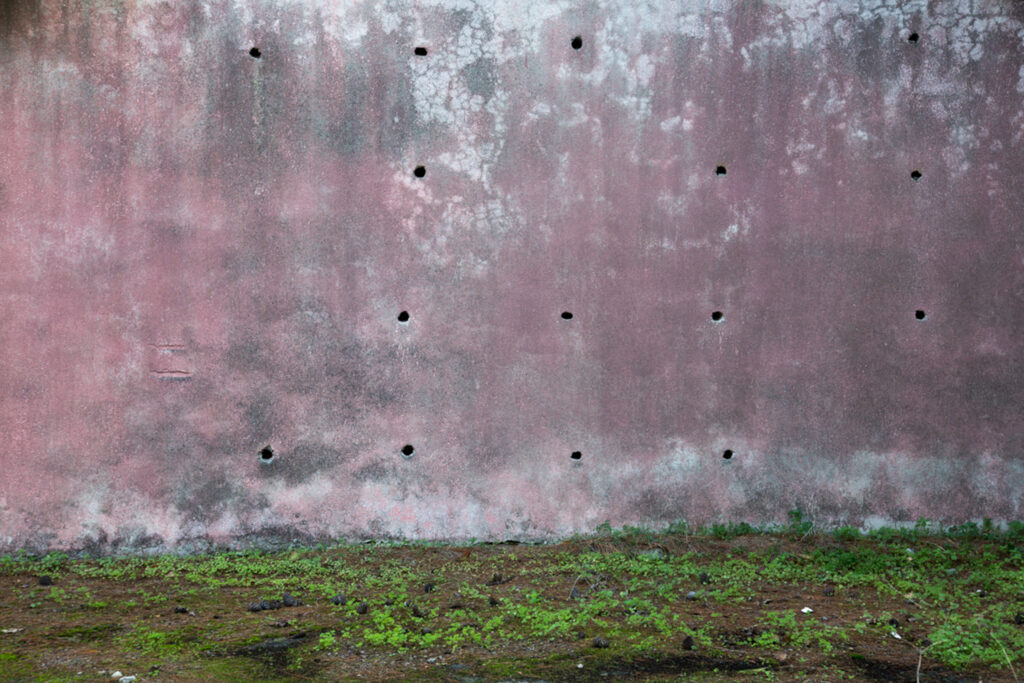
Turquie “Les iles du souvenir”
The first time I met Anna was years ago at an art fair in Crest. My wife Anke and I had wondered around for some time going from one stand to another when our eye fell on an exhibition of beautiful photos that stood out prominently among the many other exhibits at the fair. Normally, when I see a photo – even those that have been altered to look differently – I know without the shadow of a doubt it is a photo I am looking at. In this case there was something more. Was it the special angle chosen by the artist, the composition, the colour scheme, the play of light, or all four? While we were driving back home it suddenly dawned upon me that some of the pictures I had admired made me think of paintings. Although technically the scenes were snapshots, they looked as though they had been made over time, like the work of painters. This side of Anna’s originality strikes me every time I see certain examples of her work.
We met again in 2014 at an exhibition at the Craft Gallery in Dieulefit that Anna had poetically called “Le savon bleu” or Blue Soap. She had travelled to Tunisia and returned with a remarkable series of photos picturing various aspects of a traditional hammam in the medina of Tunis; a hammam is more generally known under the name Turkish bath that goes way back to the Ottoman Empire, founded in the 13th century. There were views of various chambers, the hot one, the steamy one, the bathing and relaxing ones from which the bather is supposed to emerge with a clean and purified body…! Many of these photos were hauntingly dreamlike and I was once again struck by how the stories they told went beyond the printed picture; here again they also somehow reminded me of sensuously coloured abstract paintings.

Tunis “La savonnette bleue”
It is not surprising therefore that I should have decided to put Anna on my wish list when I launched Provence Reflections. Upon hearing that she was planning a new exhibition this year in May at the Craft Gallery called Isles du Souvenirs (Memory Islands) following a journey she had made to Turkey, it seemed an appropriate moment to ask her for an interview. The exhibition however was cancelled due to the virus shutdown but fortunately Anna kindly accepted my invitation. Travel being restricted we decided, as I have already indicated, to communicate via internet.
After we had said hello and adjusted our screens so that we could see each other properly, I asked Anna about her beginnings as a photographer. She told me that they had begun shortly after she had left school.
“I wanted to become a journalist, and in particular a travel journalist. With this in mind I enrolled at art school in the photography section as well as taking up language studies. I am bilingual French and Spanish but with a view of communicating with the people I expected to meet during my travels I decided it would be practical to add two more languages to my arsenal by studying German and English. Later I also studied at the Ecole des Gobelins, a well-known photo institution.”
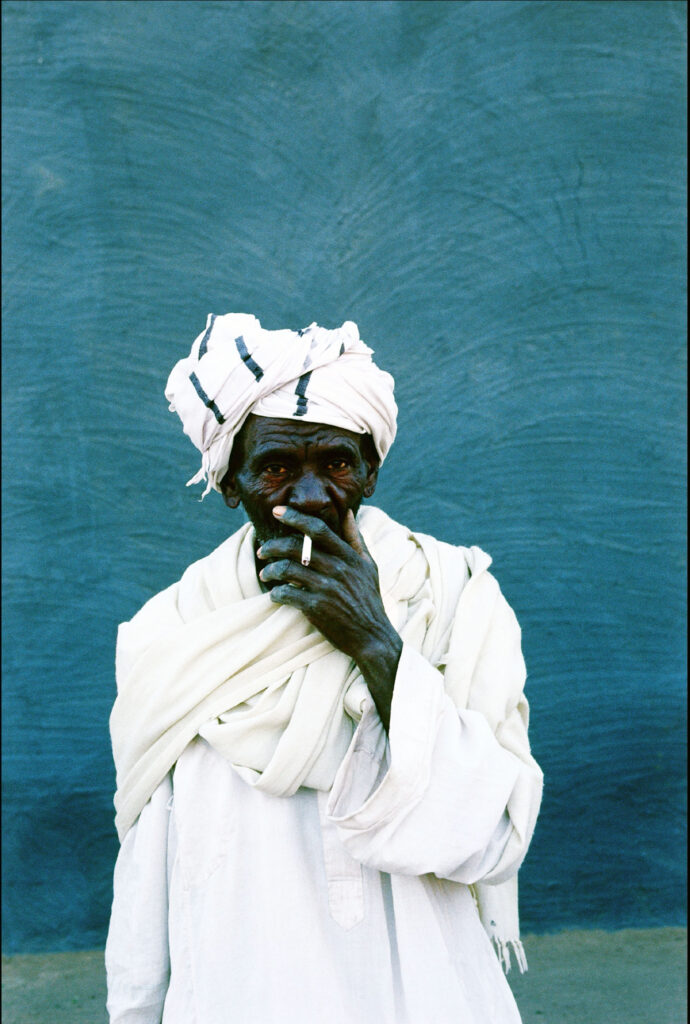
Soudan “Désorienté”
Anna’s first journey was to Egypt and many others followed from Yemen where she lived for a year to Azerbaijan, Turkey, Eastern Siberia, and North Africa…. The photos she brought back from these countries are beautiful from an aesthetic point of view but in no way folkloristic or stereotyped like the ones that are so often reproduced in travel books and guides. Considering her choice of subjects Anna is clearly highly receptive to the cultural aspects of the countries she visits as well as to the spirit and mentality of their inhabitants. It could well be that this empathy partly stems from the fact that she herself is bicultural, as well as to the enquiring mindset of the good journalist she obviously is. In the course of time Anna’s work has won wide recognition and she has exhibited in France and abroad. Her photos have been published in magazines and in books and she has participated in the organisation of numerous events related to photography.
I asked her about her longing to travel. What did she hope to find abroad and perhaps discover? I also wanted to know why she was apparently drawn to the Middle East and more generally to the Arab world.
“I love to travel because I’m interested in discovering places that have not yet been overrun by tourists and where my contacts with people are fresh and natural. That is what inspires me and makes me want to take a photo. I never know beforehand what I am going to come across and whether I am going to find the unknown and mysterious something that encourages me to move forward. I hope to meet beautiful souls and find places that make me dream. More or less unconsciously when I wake up early in the morning there is a yearning to make the kind of photos that turn out to be moments of visual grace and that come close to what I deeply feel.
Yes, it is true that the Middle East and the Arab world are dear to me. Surprisingly, for nothing really predetermined this attraction, except perhaps that it might come from my cosmopolitan family of which some ancestors have Turkish origins. After having spent so many years exploring the Middle East there is one thing I am absolutely sure of and that is that Yemen has left an indelible mark on me. I lived there for a year and I have regularly gone back so that in a sense I feel that it has become my country of adoption.
My attraction to oriental countries is largely sensory (the heat, the dryness, the smell of incense, the chant of the muezzin, the sweetness of tea, the flavours of the food) and makes me feel I am in harmony with myself, without false pretences. It also makes it easier for me to blend into the places where I stop to take my photos. There is another element which in my opinion is just as important and that is the light – which needs to be mastered as it can often be extremely harsh – for it is ideal in bringing out the colours and the matter of the subjects in my photos.”
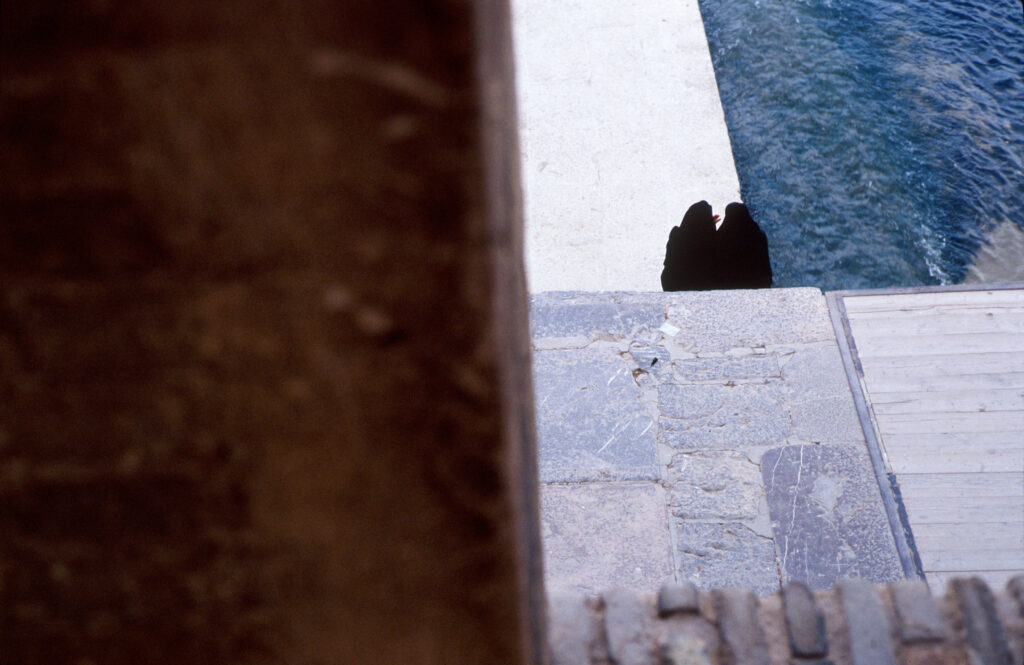
Yémen “Désorienté”
While her work as a professional photographer requires Anna to diversify her activities by carrying out freelance assignments for marriages, fashion magazines, for industrial purposes and for advertising companies, etc., I was curious to know how she managed to adapt her mind and technique to making photos of such a conventional nature with the same spirit of adventure and creativity that animates her other work.
“From time to time I am assigned to make photos for fashion magazines, marriages, advertising agencies and to cover sports events. I consider this work to be a challenge for it is not where my heart really lies. Even though I am sometimes expected to make conventional photos I try to approach them in an original way. Illustration work bores me! However, my many years of experience with documentary photos have taught me a lot about image making so that I am able to adapt to all sorts of situations. Besides, there is always something to learn from a human and emotional point of view and how to be creative when confronted by a new challenge, whatever it might be.”
I wondered whether after years of observing the world through a viewfinder Anna didn’t suffer from an occupational hazard that might affect the perception of her surroundings.
“It is a way of seeing that has become natural and instinctive and it has been with me for a long time. I look out for places that inspire me and make it worthwhile for me to register them by taking a photo. They are often places that are undergoing change (e.g. a demolition site that becomes a place of transition between two periods of time). I am very attentive to the quality of the light, the shadows, the colours and the contrasts, and as soon as I sense a form of harmony or dichotomies that appeal to me, I take a photo. I never set a stage beforehand nor do I modify the photo once it has been taken. The places I search for are where silence reigns, that are bare and lack apparent beauty. When there is too much noise and there are too many colours the excess makes me feel lost. Vulgarity kills my inspiration!”

Finally, I asked Anna if she could describe what a “perfect photo” should be. I also wished to know whether among hers, there were photos that complied with these criteria?
“I will not risk attempting to define “the perfect photo” but I do at times get an extra adrenaline kick when the visual elements, the lighting, framing, the emotional impact of one of my photos are all in harmony. There are some from the Middle East I never tire of looking at, like those of the “The Death Sentence of the Parrot” a series I made in Dubai in the Satwa neighbourhood, the portrait of Bachar al Assad in an old palace in Damas in Syria, a scene in a narrow street in Tihana along the coast of the Red Sea in Yemen, or the one I took on the day following an earthquake on the island of Ormuz in Iran.”
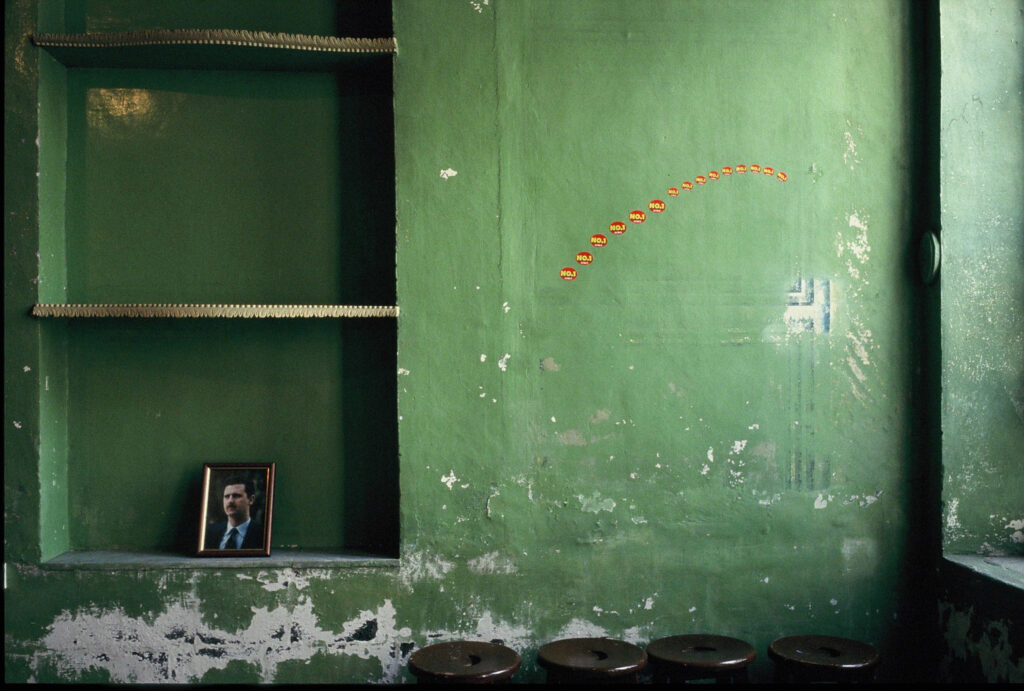
Damas “Portrait de Bachar al Assad”
I would like to end this blog post by a quotation that fits Anna’s work very well. I do so from memory as I don’t have it at hand. In substance it says that a photo can conceal a reality that is so subtle that it becomes truer than reality itself! I am grateful to Anna for having made me aware of it!
Anna Puig Rosado’s work will be exhibited in Galerie Craft (Dieulefit) from 21 May to 28 June 2020.
Opening hours – Friday, Saturday, Sunday: 10h30-12h30 and 15h-19h
Special opening every Thursday from 16h to 18h with Anna present at the gallery
Posted in: Art
